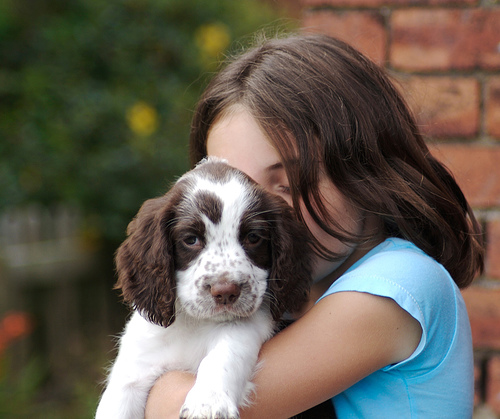The next time you pick up an adorable little fuzzy puppy and declare it to be so cute you’re going to die, don’t blame your emotions. Blame science.

A group of graduate student researchers at Yale University recently coined the term “cute aggression,” to explain the body’s response to overwhelmingly adorable things and presented a paper on it earlier this year.
SoulPancake, a Youtube channel dedicated to positive psychology, picked up on this study and incorporated it into their new series, The Science of Happiness.
“[Yale scientists] found out that if you’re overwhelmed with a sense of happiness or giddiness, your body and your brain looks for some way to quickly and efficiently exert that,” said The Science of Happiness co-creator Mike Bernstein in a behind-the-scenes video on Youtube. “And the fastest way your body can come up with, is aggression.”
Now, this doesn’t mean that you’re more likely to turn around and start kicking faces after you see a kitten sneeze and fall over. The aggression is more likely to be exerted by pinching someones cheeks, squeezing too hard during a hug or popping bubble wrap.
Yale researchers had 109 volunteers look at cute, funny, or neutral pictures and asked whether they agreed that it was I-just-can’t-handle-it cute or if they felt the need to squeeze something and say “grr.”
They found that the cuter the picture was, the more aggressive the response would be.
“We think it’s about high positive-affect, an approach orientation and almost a sense of lost control,” said research group-leader Rebecca Dyer in an article written earlier this year by Popular Science contributor Shaunacy Ferro and entitled “Why Do We Want to Squeeze Cute Things?”
After the initial test, the researchers invited the volunteers back, gave them bubble wrap, and had them watch another animal slideshow.
Volunteers would pop 120 bubbles while looking at cute pictures and only 80 to 100 bubbles when looking at neutral ones.
SoulPancake did a similar test and found that one volunteer popped 45 bubbles for the cute pictures and only four for neutral ones.
Dyer has two theories for why we display cute aggression.
First, she suggested that when we are unable to reach through the screen and take care of the cute thing (which we are biologically programed to do) we become frustrated, and then aggressive.
Conversely, our brains are overwhelmed with the torrent of happiness that cuteness brings so the brain gives the happy emotion a negative response in attempt to balance the high levels of energy and emotion. This is similar to when we are so overwhelmed with happiness that we begin to cry.
“Ultimately cute aggression is nothing to worry about,” said The Science of Happiness’ host Julian Huguet in SoulPancake’s video A Study of Cute Aggression. “But, if that aunt [who also pinches your cheeks] does tells you that you’re so cute she could just eat you up, run.”
To check out the video and many other positive psychology studies search ‘The Science of Happiness – A Study of Cute Aggression’ on Youtube.




